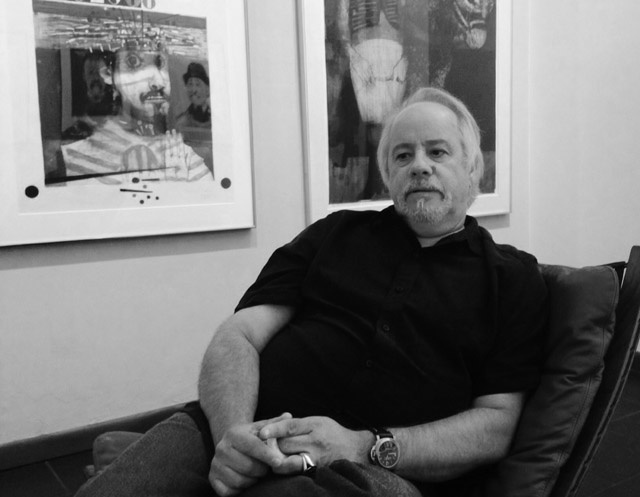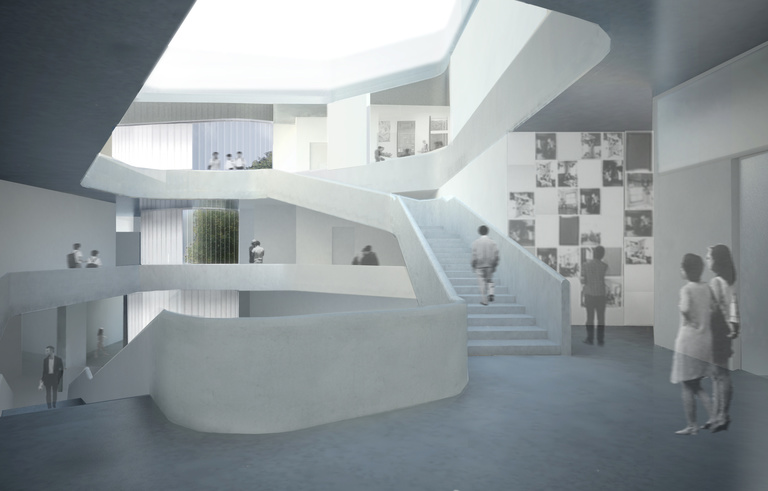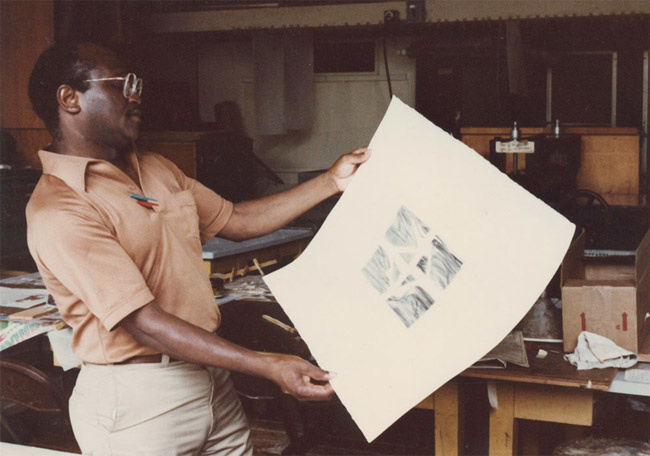A gift from the family of internationally renowned artist Mauricio Lasansky honors his legacy as a groundbreaking printmaker and distinguished professor who helped shape the University of Iowa’s pioneering contributions to the world of arts education.
The $340,000 contribution will benefit the new facility for the UI School of Art and Art History, which is designed by acclaimed architect Steven Holl, and is part of the Arts & Minds fundraising campaign, which seeks to raise $30 million in private-gift support for replacement facilities for the UI arts campus.
The School of Art and Art History, Hancher, and the School of Music—all of which lost their buildings in the flood of 2008—will open their new facilities in 2016. The Federal Emergency Management Agency and the state of Iowa have provided critical funding to replace these facilities. As with all federally funded projects of this kind, the UI must provide a portion of the funding for the project. The $30 million in private support will bridge the funding gap and help the UI realize its vision for a revitalized arts campus that will benefit future generations.
In honor of the Lasansky family’s many years of UI loyalty and generosity—and in memory of Mauricio Lasansky’s exceptional contributions as professor of the UI School of Art and Art History—the atrium in the new facility for the School of Art and Art History will be called the Mauricio L. and Emilia B. Lasansky Atrium.
“As both artist and teacher, Mauricio Lasansky was a force in the history of printmaking and brought international recognition to the program he founded at the University of Iowa,” says John Beldon Scott, director of the UI School of Art and Art History and Elizabeth M. Stanley Professor of the Arts. “The naming of the atrium of the new building at the School of Art and Art History after Mauricio and Emilia Lasansky will be a testament of that legacy to future generations of art students.”

“My parents truly had a love for the state and a love for the art school. The three central posts in my father’s world were his family, his school, and his own work, and those things were inseparable,” says Phillip Lasansky, who is one of the couple's six children and president of the Lasansky Corporation. “This wasn’t just a job for my dad; it was his life.”
Mauricio Lasansky, who was born in Buenos Aires, Argentina, in 1914, was one of the few modern artists who worked almost exclusively in printmaking. Best known for making large-scale prints in which he used multiple plates and full ranges of color, Lasansky combined a spectrum of graphic techniques including etching, drypoint, aquatint, and engraving.
Lasansky had won international awards for his work by age 22, and in 1943, he received a Guggenheim Fellowship—the first of five in his career—which he used to fund his move to the United States. He accepted a teaching position at the UI in 1945 and helped establish its printmaking program—long regarded and which continues as one of the finest in the country. He is considered a forerunner in the evolution of the graphic arts as a critical art form, and in September 1962, Time magazine called Lasansky “the nation’s most influential printmaker” and his University of Iowa studio “the printmaking capital of the United States.”
Although he was a world-famous printmaker, Lasansky may be best known for The Nazi Drawings, which depict the horrors of the Nazi atrocities. He created these 33 drawings, using paper and pencil, as a way to process his emotional response to such degradations. Made throughout a six-year period, and completed in the mid-1960s, the series debuted in the spring of 1967, at the opening of the Whitney Museum of American Art in New York City.
Lasansky retired from the UI in 1985, but continued to work in his Iowa City studio until his death in 2012. His work can be found in private collections and in more than 140 museums nationwide, as well as in Europe and Latin America. During his long career, he had more than 250 solo shows in 35 countries, and received six honorary doctorate of arts degrees.
The UI is honoring Lasansky with an exhibit, Mauricio Lasansky and the First Generation, which runs in Art Building West from Aug. 25 to Sept. 11, 2014, and features works by Lasansky as well as by his former students, who were among the earliest students he ever taught and represent the first wave of pupils influenced by his revolutionary printmaking.
The UI School of Art and Art History, in the College of Liberal Arts and Sciences, was established in 1936 and has played an integral role in shaping the UI’s rich arts tradition. The school has two divisions—art history and studio art—and is home to nearly 600 graduate and undergraduate students. Its creative and collaborative environment helps advance the UI’s interdisciplinary educational mission.

The forthcoming facility for the UI School of Art and Art History is designed by renowned architect Steven Holl, of New York, and by Des Moines firm BNIM Architects. Situated at the corner of North Riverside Drive and River Street in Iowa City, the building is adjacent to Art Building West, another UI facility designed by Holl, and will include working art studios, classrooms, galleries, and faculty office spaces. It is scheduled for completion in fall 2016.
“Mauricio Lasansky is an Iowa icon, and it is fitting for his legacy to be permanently honored at the School of Art and Art History,” says Lynette Marshall, UI Foundation president and CEO. “We are thankful to the Lasansky family for continuing to support the school that Mauricio made such an important contribution to.”
About the University of Iowa Foundation
The UI Foundation’s mission is to advance the UI and fulfill the aspirations of those it serves. The university’s dedicated contributors fund a broad array of needs, from student care to innovative facilities, community outreach and global education. The UI and UI Foundation are conducting a historic comprehensive $1.7 billion fundraising campaign, For Iowa. Forever More: The Campaign for the University of Iowa, which will secure the UI’s status as a world-class institution for future generations.
The UI Foundation is the preferred channel for private contributions that benefit all areas of the University of Iowa. For more information about the foundation and the campaign, visit the foundation website.
